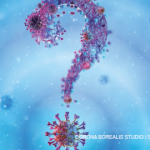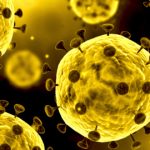 NEW ORLEANS—The COVID-19 pandemic brought to light the interplay of the SARS-CoV-2 virus and the immune systems of infected patients. Acute autoimmune manifestations of COVID-19, such as multisystem inflammatory syndrome in children (MIS-C) and myocarditis, clearly exist. A session at the 2023 Pediatric Rheumatology Symposium, Autoantibodies in COVID-19 explored this topic in detail, including a thorough review of the relevant literature.
NEW ORLEANS—The COVID-19 pandemic brought to light the interplay of the SARS-CoV-2 virus and the immune systems of infected patients. Acute autoimmune manifestations of COVID-19, such as multisystem inflammatory syndrome in children (MIS-C) and myocarditis, clearly exist. A session at the 2023 Pediatric Rheumatology Symposium, Autoantibodies in COVID-19 explored this topic in detail, including a thorough review of the relevant literature.
COVID-19: A Review
Paul J. Utz, MD, professor of medicine, Division of Immunology and Rheumatology, Stanford University School of Medicine, Stanford, Calif., began his lecture with a discussion of research findings presented at a plenary session at ACR Convergence 2020.
In a 2020 study published in Science Translational Medicine, Zuo et al. measured eight types of antiphospholipid antibodies in the serum of patients hospitalized with COVID-19. They found that more than half of these patients tested positive for at least one such antibody. Higher titers of these antibodies were associated with the release of neutrophil extracellular traps (NETs), higher platelet count, severe respiratory disease and lower glomerular filtration rate. Additionally, purified IgG from the sera of patients with COVID-19 induced an accelerated venous thrombosis in two different mouse models.1 Taken together, these findings may explain why the prothrombotic phenotype of many patients with severe COVID-19 looks similar to that seen in patients with lupus and/or antiphospholipid syndrome.
Next, Dr. Utz discussed the research of Magro et al., which sought to analyze skin biopsy specimens to understand the main pathogenic principles of COVID-19.2 The authors identified three potential pathways for cutaneous COVID-19:
- Complement-mediated thrombotic vascular injury syndrome that deploys the alternative and mannan-binding lectin pathways;
- Robust T cell- and type I interferon-driven inflammation; and
- Immune complex-mediated, vasculitic cutaneous reactions driven by the humoral immune system.
Among these forms of cutaneous reactions in COVID-19 is the process of interferon-driven COVID-19 perniosis, colloquially called COVID toes. Magro et al. noted that, as the most superficial organ, the skin has been and continues to be a readily accessible and helpful resource for understanding the acute, subacute and chronic effects of COVID-19 on the body.
Autoantibodies
Returning to his main topic, Dr. Utz noted that autoantibody production appears to be a common feature of COVID-19.
A large study from 2021 analyzed the nature of the autoantibodies seen in infected patients. Chang et al. developed three protein arrays to evaluate IgG autoantibodies typically seen in connective tissue diseases, anti-cytokine antibodies and anti-viral antibody responses in patients hospitalized with COVID-19.3 These researchers found a positive anti-nuclear antibody (ANA) is common, occurring in approximately 25% of patients, and that this ANA is typically low titer and can show various patterns, including rarer patterns, such as nucleolar. Autoantigens that are common in such conditions as lupus and Sjögren’s disease, including anti-Smith, anti-Ro, anti-La and anti-dsDNA antibodies, are not as prominent. Finally, antibodies to MPO and PR3, which are often seen in anti-neutrophil cytoplasmic antibody (ANCA) associated vasculitis, were not found in the 147 patients evaluated.
Dr. Utz explained that, although this study had just a small sample of patients, these findings provide some general trends that may indicate the relative frequencies with which different autoantibodies are seen in patients with COVID-19.
Anti-cytokine autoantibodies: Steven Holland, MD, director of the Division of Intramural Research and chief of the Immunopathogenesis Section at the National Institutes of Health, and colleagues have described an adult-onset immunodeficiency with susceptibility to mycobacterial infections due to the presence of anti-interferon (IFN) gamma autoantibodies.4 This finding implies that some apparently infectious diseases are the consequence of autoimmunity in the form of anti-cytokine antibodies. In almost 1,000 patients with life-threatening COVID-19, more than 100 had autoantibodies against type-1 IFNs, but such antibodies were either completely or nearly absent in patients with asymptomatic SARS-CoV-2 infection, mild infection or healthy controls.5 It’s unclear if COVID-19 unmasks anti-cytokine autoantibodies, but these autoantibodies seem to significantly effect the function of the adaptive and innate immune systems.
Given the role chemokines play in orchestrating immune cell trafficking, it’s possible that antibodies against these chemokines may play beneficial roles in reducing the immune-mediated sequelae of viral infection.
Chemokines: Being somewhat provocative, Dr. Utz said that when he was in medical training, the conventional wisdom was that autoantibodies were essentially always harmful or bad. However, Muri et al. found that antibodies against specific chemokines widely present in patients after COVID-19 infection were associated with favorable disease outcomes and were protective against the development of long COVID for up to one year after infection.6 Thus, given the role chemokines play in orchestrating immune cell trafficking, it’s possible antibodies against these chemokines may play beneficial roles in reducing the immune-mediated sequelae of viral infection.
Dr. Utz himself contributed to research examining the prevalence of autoantibodies in non-SARS-CoV-2 respiratory infections and critical illness. By profiling IgG autoantibodies in more than 260 patients with viral, bacterial and non-infectious critical illnesses, the researchers found anti-cytokine antibodies were present in more than half of these patients, were more common in infected vs. noninfected patients and often showed receptor-blocking activity against surface receptors for type I IFN, GM-CSF and interleukin 6. Additionally, autoantibodies directed against connective tissue disease-associated autoantigens were observed.7
The researchers note that we do not yet fully understand the mechanisms by which tolerance to self-antigens is broken—perhaps transiently—in COVID-19, influenza and other infections. Further research on this topic may shed light on how the infectious process results in the promulgation of autoantibodies.
In Sum
Dr. Utz left the audience with a great deal of food for thought in understanding the short and long-term implications of COVID-19 as it relates to autoantibody production. Much remains to learn on this topic.
Jason Liebowitz, MD, completed his fellowship in rheumatology at Johns Hopkins University, Baltimore, where he also earned his medical degree. He is an assistant professor of medicine in the Division of Rheumatology at Columbia University Vagelos College of Physicians and Surgeons.
References
- Zuo Y, Estes SK, Ali RA, et al. Prothrombotic autoantibodies in serum from patients hospitalized with COVID-19. Sci Transl Med. 2020 Nov;12(570):eabd3876.
- Magro C, Nuovo G, Mulvey JJ, et al. The skin as a critical window in unveiling the pathophysiologic principles of COVID-19. Clin Dermatol. 2021 Nov-Dec;39(6):934–965.
- Chang SE, Feng A, Meng W, et al. New-onset IgG autoantibodies in hospitalized patients with COVID-19. Nat Commun. 2021 Sep 14;12(1):5417.
- Hong GH, Ortega-Villa AM, Hunsberger S, et al. Natural history and evolution of anti-interferon-γ autoantibody-associated immunodeficiency syndrome in thailand and the united states. Clin Infect Dis. 2020 Jun 24;71(1):53–62.
- Bastard P, Rosen LB, Zhang Q, et al. Autoantibodies against type I IFNs in patients with life-threatening COVID-19. Science. 2020 Oct;370(6515):eabd4585.
- Muri J, Cecchinato V, Cavalli A, et al. Autoantibodies against chemokines post-SARS-CoV-2 infection correlate with disease course. Nat Immunol. 2023;24(4):604–611.
- Feng A, Yang EY, Moore AR, et al. Autoantibodies are highly prevalent in non-SARS-CoV-2 respiratory infections and critical illness. JCI Insight. 2023 Feb;8(3):e163150.




